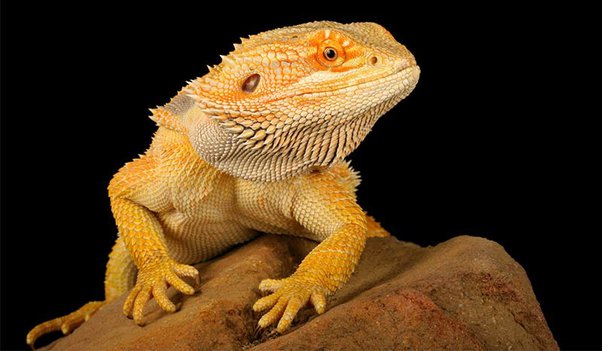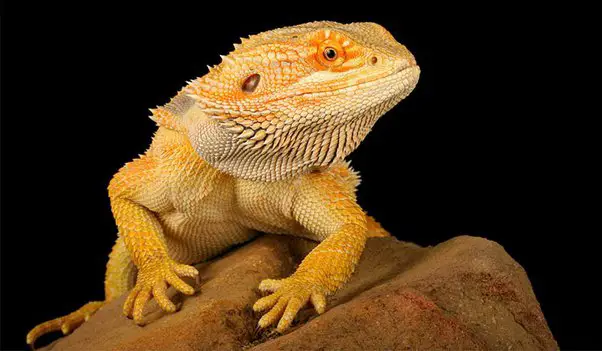Bearded dragons are fascinating creatures that have become increasingly popular as pets. One of the most common questions asked by those who are new to the world of reptiles is whether bearded dragons are related to dinosaurs. The answer to this question is both simple and complex, and it involves a deep dive into the history of these two types of creatures.
Bearded dragons are not dinosaurs. Although they share some physical characteristics like scales and a prehistoric appearance, bearded dragons are actually a type of lizard that belongs to the reptile family. Dinosaurs, on the other hand, went extinct over 65 million years ago and are not alive today.

Are Bearded Dragons Dinosaurs?
Bearded dragons are fascinating creatures that have captured the hearts of pet owners worldwide. They are a type of lizard that is native to Australia and have become a popular pet due to their docile nature and low maintenance requirements. However, a question that often arises among bearded dragon enthusiasts is whether these reptiles are related to dinosaurs, specifically the fearsome creatures that roamed the earth millions of years ago.
Classification
Bearded dragons belong to the family Agamidae, which includes over 350 species of lizards. This family is further divided into subfamilies, with bearded dragons belonging to the subfamily Amphibolurinae. While dinosaurs belong to a different family altogether, the two groups do share some similarities in terms of physical characteristics. For example, both bearded dragons and dinosaurs have scales, long tails, and are cold-blooded reptiles.
Despite these similarities, bearded dragons and dinosaurs are not directly related. Dinosaurs belong to a separate group of reptiles called Archosauria, which includes crocodiles, birds, and pterosaurs. These reptiles evolved during the Mesozoic Era and dominated the earth for over 160 million years until their extinction around 65 million years ago.
Physical Characteristics
While bearded dragons are not dinosaurs, they do share some physical characteristics with their prehistoric counterparts. For example, both groups have four legs, long tails, and well-developed jaws. Bearded dragons also have a distinctive frill of skin around their necks, which they can puff up to intimidate predators or attract a mate.
However, there are also some key differences between bearded dragons and dinosaurs. For one, bearded dragons are relatively small compared to the massive size of some dinosaurs. Additionally, dinosaurs were bipedal, meaning they walked on two legs, while bearded dragons are quadrupedal and walk on all four legs. Finally, dinosaurs had a unique bone structure in their hips and legs that allowed them to support their massive weight, which is not found in bearded dragons.
Benefits of Owning a Bearded Dragon
While bearded dragons may not be dinosaurs, they do make great pets for a variety of reasons. For one, they are relatively low maintenance and don’t require as much space as some other reptiles. They also have a docile temperament and are known for being friendly and curious, which makes them great for interacting with children.
Another benefit of owning a bearded dragon is that they are relatively easy to feed. They have a varied diet that includes insects, vegetables, and fruit, which makes it easy to provide them with a balanced diet. Finally, bearded dragons are fascinating creatures to observe, with their unique behaviors and physical characteristics.
Bearded Dragons vs. Other Reptiles
While bearded dragons may not be dinosaurs, they do have some similarities and differences with other reptiles. For example, they are similar to iguanas in that they are both herbivores and have a similar body shape. However, bearded dragons are more docile and easier to handle than iguanas, which can be aggressive and difficult to tame.
Bearded dragons are also different from snakes, which lack legs and have a more streamlined body shape. While some snakes can make great pets, they require more specialized care and feeding than bearded dragons. Finally, bearded dragons are different from turtles, which have a hard shell and are aquatic animals. While turtles can be fascinating pets, they require a different type of environment and care than bearded dragons.
Conclusion
In conclusion, while bearded dragons may share some physical characteristics with dinosaurs, they are not directly related to these prehistoric creatures. Bearded dragons belong to the family Agamidae, while dinosaurs belong to the family Archosauria. Despite this, bearded dragons are fascinating animals that make great pets due to their docile nature, low maintenance requirements, and unique physical characteristics.
Frequently Asked Questions
Are Bearded Dragons Dinosaurs?
No, bearded dragons are not dinosaurs. While they may look similar to some dinosaurs, they are actually a type of reptile called a lizard. Dinosaurs went extinct millions of years ago, while bearded dragons are still alive today.
Bearded dragons are part of the Pogona genus and come from Australia. They are often kept as pets and are known for their spiky appearance, docile nature, and interesting behaviors.
What are some similarities between Bearded Dragons and Dinosaurs?
Bearded dragons and dinosaurs do share some similarities in their appearance. Both have scaly skin, and bearded dragons have a similar body shape to some dinosaurs. Additionally, some species of dinosaurs, like the Ankylosaurus, had spikes or armor-like plates on their bodies, which is similar to the spikes on a bearded dragon’s head and back.
However, it’s important to remember that bearded dragons and dinosaurs are very different animals. Dinosaurs lived millions of years ago and were much larger and more diverse than bearded dragons. Bearded dragons are a type of lizard that can be kept as pets, while dinosaurs are extinct and can only be studied through fossils and scientific research.
Can Bearded Dragons be considered as modern-day Dinosaurs?
No, bearded dragons cannot be considered as modern-day dinosaurs. While they do share some similarities in appearance, behavior, and habitat, bearded dragons are a different species of reptile altogether. Dinosaurs were a diverse group of animals that went extinct millions of years ago, while bearded dragons are still alive today.
However, bearded dragons are interesting animals in their own right and are often kept as pets due to their unique appearance and docile nature. They are also important to the ecosystem in their native Australia, where they help control insect populations and serve as a food source for other animals.
Can Bearded Dragons be related to Dinosaurs?
Bearded dragons and dinosaurs are both reptiles, but they are not closely related. Dinosaurs belong to a different group of reptiles called archosaurs, which also includes crocodiles and birds. Bearded dragons, on the other hand, belong to the genus Pogona, which is part of the agamid family of lizards.
While bearded dragons and dinosaurs may share some similarities in appearance and behavior, they are evolutionarily distinct from each other. Bearded dragons evolved from a different lineage of reptiles than dinosaurs did, and they have undergone their own unique evolutionary history over millions of years.
Did Bearded Dragons exist during the time of Dinosaurs?
No, bearded dragons did not exist during the time of dinosaurs. Bearded dragons are a relatively recent species of reptile, with their earliest known ancestors dating back to the Miocene epoch, around 20 million years ago. Dinosaurs, on the other hand, went extinct around 66 million years ago at the end of the Cretaceous period.
While bearded dragons may look similar to some dinosaurs, they are a completely different species of reptile that evolved millions of years after the dinosaurs went extinct. Bearded dragons are native to Australia and have only been known to science since the 19th century, while dinosaurs dominated the earth for over 150 million years.
Unamused bearded dragon meets dinosaur
In conclusion, while bearded dragons may share some similarities with dinosaurs, they are not considered to be dinosaurs themselves. Despite their unique physical characteristics, such as their scales and sharp claws, bearded dragons are classified as reptiles and belong to the suborder Lacertilia. Dinosaurs, on the other hand, are a separate group of animals that went extinct millions of years ago.
While it may be tempting to think of bearded dragons as modern-day dinosaurs, it’s important to remember that they are their own unique species with their own set of behaviors and characteristics. By studying and appreciating the natural world around us, we can gain a greater understanding and appreciation for the amazing diversity of life on this planet. So, while bearded dragons may not be dinosaurs, they are still fascinating creatures worthy of our admiration and respect.


